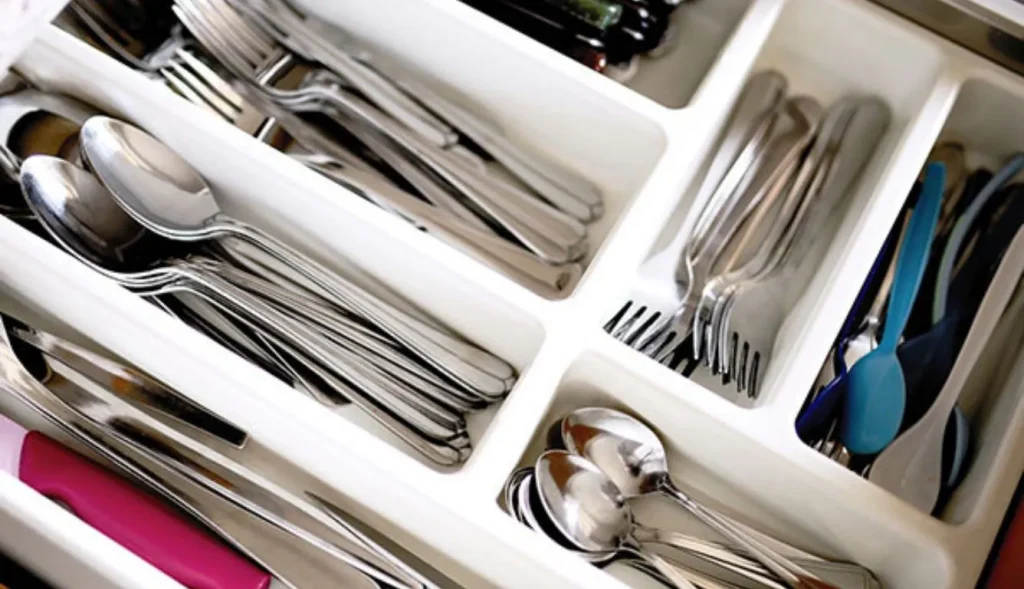Introduction
Packing silverware might not be the most exciting part of moving, but it’s crucial for protecting your valuable and often sentimental items. Whether you’re dealing with a full set of family heirlooms or just everyday utensils, knowing how to pack silverware properly can save you from potential damage and ensure everything arrives at your new home intact. In this guide, we’ll cover everything from the supplies you need to the best packing techniques.

Supplies Needed
Before diving into the packing process, gather the following supplies:
- Packing Materials: Bubble wrap, packing paper, foam pouches, and tissue paper.
- Tools and Supplies: Packing tape, markers for labeling, and sturdy moving boxes.
These items will help you pack your silverware securely and prevent any potential damage during transit.
Preparing Your Silverware
Cleaning and Drying
Before packing, it’s essential to clean your silverware thoroughly. Wash each piece with mild soap and warm water to remove any food residue or grime. Dry them completely with a soft cloth to prevent water spots and tarnishing.
Sorting and Organizing
Sort your silverware into categories: forks, knives, spoons, and any specialty items. Organizing them beforehand will make the packing process more efficient and ensure you don’t mix up pieces.
Packing Methods
Using Bubble Wrap
For individual pieces, wrap each item in bubble wrap to provide cushioning and protect against scratches. Secure the wrap with tape to keep it in place.
Employing Packing Paper
Cover each wrapped item with packing paper for an additional layer of protection. This helps absorb any shocks and keeps the bubble wrap from shifting.
Utilizing Foam Pouches
For extra protection, especially for valuable or delicate pieces, use foam pouches. These pouches conform to the shape of your silverware, providing a snug fit and excellent cushioning.
Packing Individual Pieces
Forks, Knives, and Spoons
Wrap each piece individually in bubble wrap or packing paper. Stack them neatly in the box, placing a layer of packing material between each layer of utensils to prevent movement.
Specialty Items
For specialty items such as serving spoons or ornate pieces, ensure they are well-wrapped and cushioned. If possible, place them in their original cases for added protection.
Packing Sets of Silverware
Using Original Cases
If you still have the original cases or boxes for your silverware sets, use them. They are designed to fit your pieces perfectly and offer excellent protection.
Wrapping Sets in Tissue Paper
If original cases are not available, wrap each set of silverware in tissue paper before placing them in a box. Group similar items together and wrap them as a set to avoid any disarray.
Labeling and Inventory
Importance of Labeling
Label each box clearly with its contents and the room it belongs to. This will help you find your silverware quickly and easily when you’re unpacking.
Keeping an Inventory List
Create an inventory list of all the silverware you’re packing. This helps ensure that nothing gets lost and allows you to check off items as you unpack.
Loading Boxes
Proper Arrangement in Boxes
Arrange your wrapped silverware in boxes carefully. Place heavier items on the bottom and lighter items on top. Fill any empty spaces with packing material to prevent shifting.
Ensuring Stability and Protection
Make sure each box is packed snugly and securely. Avoid overpacking or underpacking, as both can lead to damage. Seal the boxes with packing tape and reinforce any weak spots.
Handling and Transport
Best Practices for Moving
Handle your packed silverware boxes gently. Avoid stacking them too high or placing heavy items on top. Keep them in a safe spot during transit to minimize jostling.
Avoiding Common Mistakes
Common mistakes include using inadequate packing materials or failing to properly label boxes. Ensure you follow all packing guidelines to prevent damage.
Unpacking and Organizing
Unpacking Tips
When you arrive at your new home, unpack your silverware boxes carefully. Check each piece for damage and clean them again if necessary.
Organizing Silverware in Your New Home
Once unpacked, organize your silverware in a designated drawer or cabinet. Use dividers or trays to keep everything neat and accessible.
FAQs
1. Do I need to use special packing materials for silverware?
Yes, using bubble wrap, packing paper, and foam pouches helps protect your silverware from scratches and damage during transit.
2. How can I prevent my silverware from tarnishing during the move?
Ensure your silverware is completely dry before packing and consider using tarnish-resistant wraps or cloths if possible.
3. Can I pack silverware in plastic bags?
While plastic bags can be used, they don’t provide as much cushioning as bubble wrap or foam pouches. It’s better to use these for added protection.
4. What should I do if a piece of silverware is damaged during the move?
Inspect your silverware carefully upon unpacking. If any damage is found, contact your moving company if you had insurance coverage, or consider professional silverware repair services.
5. Is it necessary to clean silverware before packing?
Yes, cleaning your silverware before packing helps prevent any residue from causing stains or tarnishing during the move.
Conclusion
Packing silverware doesn’t have to be a stressful task. By following these steps, you can ensure that your valuable items are well-protected and arrive at your new home in excellent condition. Remember to take your time, use the right materials, and label everything clearly. Happy moving!


Congratulation!